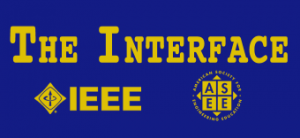A Look Ahead, A Look Behind
Dr. Edwin C. Jones, Jr. – Iowa State University and University of St. Thomas
This writer returned recently from the First World Congress on Engineering Education, sponsored by Texas A&M University—Qatar (TAMU Q) and the Maersk Corporation. The conference venue was the Qatar National Convention Center in Doha, a beautiful and very functional new facility. The conference was held in conjunction with the 10th anniversary of the founding of TAMUQ, which is a very important success story in international engineering education. This new engineering program, part of Education City in Doha, blends in a most productive way the academic climate and campus life of the main campus with the culture of Qatar, and the students graduate knowing a lot about their world and their homelands, and ready to work anywhere in the world.
The attendance at the conference was about 400 educators from approximately 17 countries on five continents. The conference general chair was Dr. Hamid Parsaei, Associate Dean of Engineering at TAMUQ. The topics were similar to those of all engineering education conferences—accreditation, retention of highly qualified students, continuing education, faculty development, the role of technology. These questions have been discussed at engineering education conferences around the world and over the years. The questions remain, but as we advance, the answers change, and change dramatically! This is one of the major reasons for having such conferences—to learn the new answers to age-old questions. And the conferences complement each other, and help us share new ideas.
This writer was really pleased to learn that Mani Mina has agreed to serve as Editor of The Interface, this joint newsletter of the IEEE Education Society and the Electrical and Computer Engineering Division of ASEE. Mani himself is an innovative and successful academician and teacher. EEs in our readership will be interested to learn that Mani wins student-driven teaching awards when teaching electromagnetics, teaching it well, but not making it “easy.” Few can do this. He also teaches technological literacy to students from across the campus, and shows us ways technology and the humanities can and should interact.
This writer actually edited the first year of newsletters, when we used mimeograph machines, typed the addresses on labels, staples, and glued moistened stamps on the documents. Bob Fontana, Floyd Cash, Don Kirk, and Bill Sayle built on the foundation, to ever increasing heights. Mani, thank you for undertaking this assignment, and we look forward to reading your articles and those you get others to write. This will be an important use of the web.
Edwin C Jones, Jr.
President, IEEE Education Society, 1975-76

Leave a Reply
Want to join the discussion?Feel free to contribute!